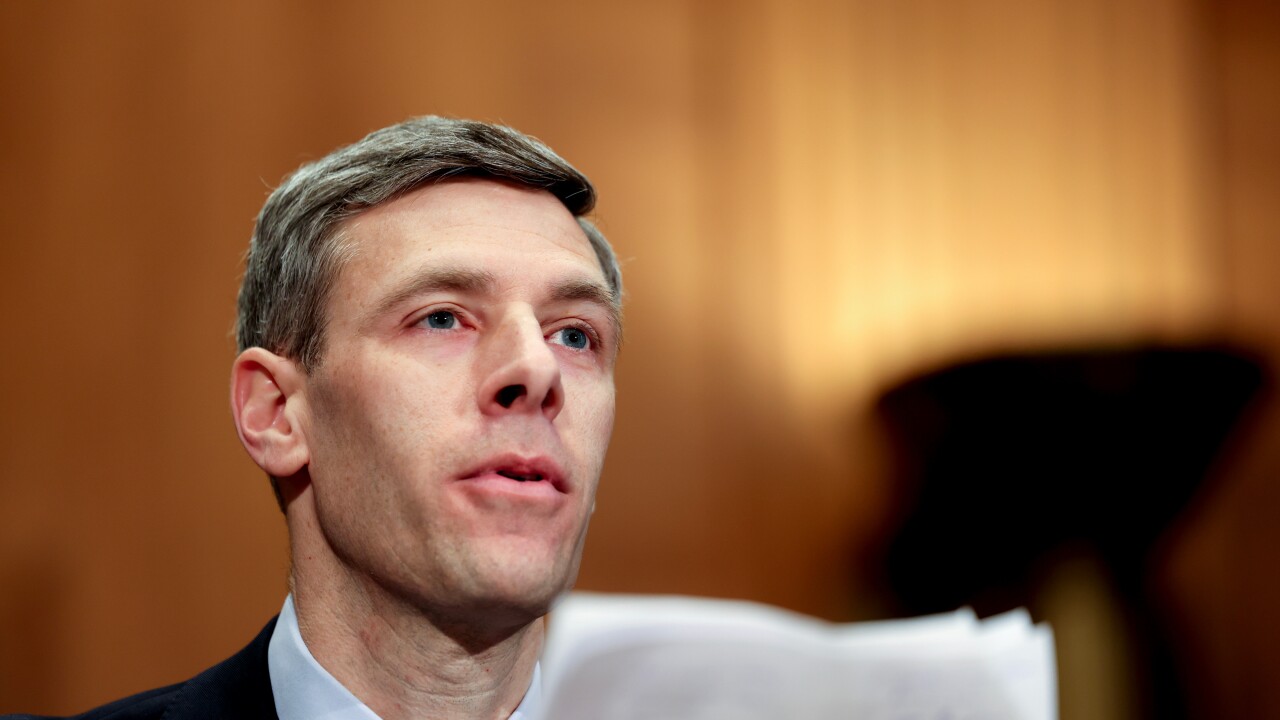
The Federal Reserve and several industry groups have agreed to put their lawsuit over stress testing on pause, an outcome that gives all sides a reprieve without sacrificing their legal optionality.
Late last week, the Fed joined the Bank Policy Institute, the American Bankers Association, the U.S. Chamber of Commerce and a pair of Ohio trade groups in filing a joint motion to stay the proceedings until Aug. 1.
The motion was made with an eye toward ensuring the Fed's current effort to amend its stress-testing program — an initiative announced one day before the trade groups filed suit against the central bank in December — continues without interruption.
In a statement, the BPI, the ABA and the other industry groups called the Fed's undertaking, which began in earnest last month with a
A Fed spokesperson declined to comment on the joint motion.
As part of the motion, the Fed has agreed to disclose the models it uses in its stress tests — and to seek comment on both the scenarios it uses each year as well as the models when material changes are made to them. The central bank pledged to issue another notice of proposed rulemaking spelling out the potential changes by Sept. 30.
In their statement, the industry groups said the pause on litigation will ensure these steps are carried out faithfully.
"A stay of the litigation will allow the Federal Reserve to focus on implementing its commitments through the rulemaking process and delivering a more accurate and reliable framework for the next stress-testing cycle," the plaintiffs said in their statement. "We will continue to monitor progress and hope to arrive at an amicable solution that renews trust in this important piece of the regulatory capital framework."
In their lawsuit, the bank groups accused the Fed of violating the Administrative Procedure Act in the way it used the annual stress tests to set capital standards for the nation's largest banks. They claimed that the stress capital buffer charge — the binding restraint for many banks with more than $100 billion of assets — is a regulatory charge and therefore the methods for determining it should be fully reviewable and subject to a notice-and-comment rulemaking process.
The Fed, meanwhile, has found itself in the
Along with saving time and resources, the mutually agreed-upon pause offers both sides in the lawsuit the chance to avoid a ruling that would set an unwanted precedent. In a
Similarly, the Fed could lose its supervisory authorities should a court rule against it. Todd Phillips, a law professor at Georgia State University, said the central bank would rather voluntarily roll back its authorities than have them stripped away entirely.
"The Fed wants to legally preserve as much power as it can," Phillips said. "The Fed, as an institution, likes to amass power. They are happy to have that power, even if they are not using it."
Phillips added that the Supreme Court's recent administrative law rulings have tended to shift discretion away from agencies in recent years. In light of this reality, he said, it benefits the Fed to prevent any court from weighing in on the legal limits of the central bank's supervisory authorities for as long as possible.
The parties in the suit must decide by Aug. 1 whether to continue the stay, according to the motion. If they do not agree to do so — and if the plaintiffs do not drop the case — the suit will resume. The trade groups would have to file their second and final summary judgment brief that day, after which the Fed would have until Aug. 28 to respond.
David Sewell, a partner with the law firm Freshfields, said the fact that a stay agreement was reached indicates that a broader agreement will be struck. The Fed likely sees the lawsuit potentially succeeding on its own merits, and also that the banks trust the Fed to address the areas in contention, he said.
"It's only a temporary pause in the litigation, for now at least, but I suspect both sides see a reasonable prospect of reaching a lasting resolution," Sewell said.






